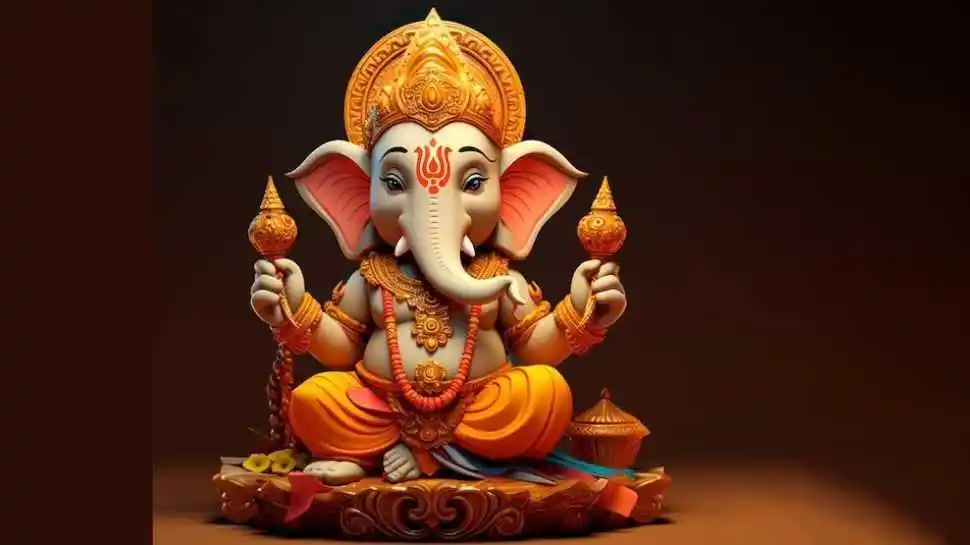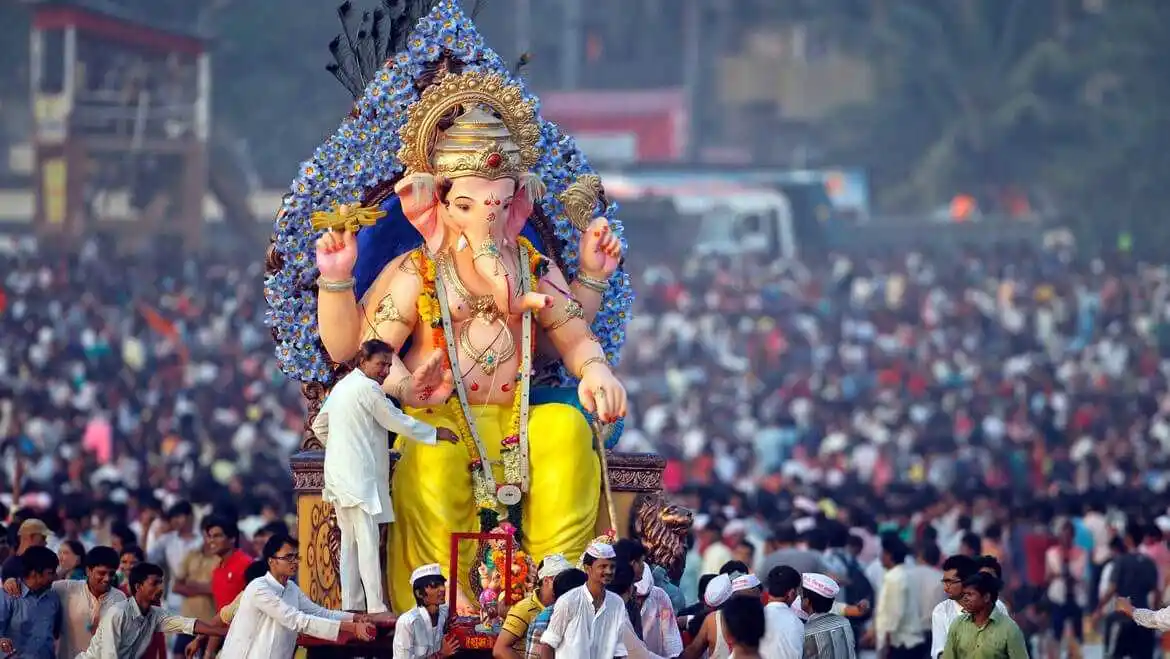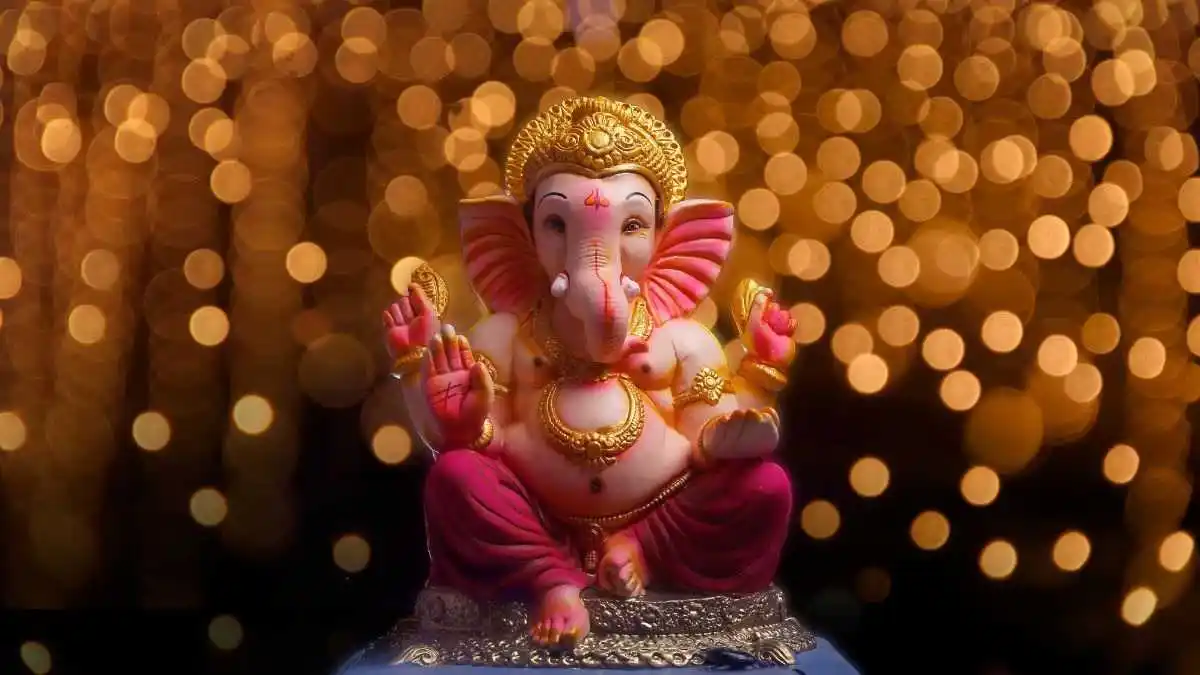Vinayaka Chavithi, also widely known as Ganesh Chaturthi, is a significant Hindu festival celebrated with much joy and jubilation across various parts of the globe. The term 'Vinayaka Chavithi' is derived from Telugu language where 'Vinayaka' refers to Lord Ganesha and 'Chavithi' means 'fourth.' Therefore, this festival is traditionally celebrated on the fourth day of the waxing moon period in the Hindu month of Bhadrapada, typically falling between August and September in the Gregorian calendar.![Vinayaka Chavithi]()
The festival commemorates the birth anniversary of Lord Ganesha, the elephant-headed deity who is the epitome of wisdom, prosperity, fortune, and is considered the remover of obstacles. He is often revered as the patron of arts, sciences, intellect and wisdom. This auspicious occasion is marked by setting up clay idols of Ganesha in homes and elaborately decorated outdoor tents, followed by ten days of prayer, music and dance.
Imagine adding a dash of glamour to your Ganesh Chaturthi festivities this year. Exciting, isn't it? Well, it's entirely possible to receive a personalised selfie video message, an Instagram DM, or even an Aarti performed by your favorite celebrity. With Tring, this exciting experience is just a few clicks away. So, don't delay in enhancing your celebration in this unique way.
This festive event transcends religious boundaries and brings together communities, making it more than just a religious festival. The emphasis on arts and cultural activities during the festival like music concerts, dance performances, and dramas paves the way for social gatherings and community bonding. It offers a fascinating insight into the culture, the traditions, and the profound love and respect that the people have for Lord Ganesha.
A Glimpse into the History of Vinayaka Chavithi
The celebration of Vinayaka Chavithi has deep historical and cultural roots. While the precise origin is somewhat obscure, historical accounts and legends associated with the festival date back centuries. It is believed that the festival was celebrated as a public event, since the times of Maratha King Shivaji, but it became widely recognized during the reign of Peshwas involving elaborate grandeur. The Ganapati deity was considered as the family deity or 'Kuladevata' of Peshwas.
In the late 19th century, during the period of India's fight for freedom, Lokmanya Tilak, a freedom fighter and social reformer, reformed the annual Ganesh festival from private family celebrations into a grand public event. His intention was primarily to bridge the gap between the castes and to promote nationalism among people with the use of large public celebrations in the face of the British colonial rule. He saw the festival as a means of creating unity, instilling a sense of pride and culture in Indians, and to defy the British colonial laws of large public assemblies. Ever since, Vinayaka Chavithi has been celebrated as an exuberant public festival, while still maintaining its private family rituals.
Significance of Vinayaka Chavithi Festival
Vinayaka Chavithi, also known as Ganesh Chaturthi, is not just a festival but a significant event underlining strong philosophical and spiritual concepts in Hinduism. This festival celebrates Lord Ganesha, the divine embodiment of wisdom, prosperity, and good fortune. More than merely being a jovial commemoration, Vinayaka Chavithi symbolizes the human aspiration to seek divine blessings to overcome obstacles in life’s journey. Ganesha’s elephant head denotes wisdom, and his human body signifies the earthly existence of humans.
By worshipping Lord Ganesha, devotees seek to imbibe his qualities and eliminate the negativity that hinders their spiritual and material growth. The immersion ritual, or Visarjan, represents the cycle of creation and dissolution in the universe and conveys a deep spiritual message that one must not cling onto materialistic attachments. It encourages the belief that all physical manifestations are temporary, advising mankind to embrace the eternal spirit. This rich confluence of mythology, symbolism and profound wisdom makes Vinayaka Chavithi a festival of significant spiritual magnitude.
The Rituals of Vinayaka Chavithi
Vinayaka Chavithi is marked by a sequence of rituals that blend tradition, faith, and mythology while imparting a powerful spiritual experience for the devotees.The celebrations begin with the installation of Ganesha idols, handcrafted from eco-friendly materials like clay. This ritual, known as 'Ganesha Prathisthapana', commences with the 'Avahanam' or invocation of the Lord.The 'Ganesha Puja', performed by devotees involves offerings of flowers, fruits, and sweets. Traditional prayers are elucidated to pay homage.
Devotees also recite Vedic hymns and the Ganapati Atharvashirsha, a sacred text dedicated to Ganesha.One of the most loving rituals is the offering of 'Prasadam' – Modak in Maharashtra, Kozhukattai in Tamil Nadu, Undrallu in Andhra Pradesh. These are considered Ganesha's favourite foods, symbolising the sweet rewards of prayers.During the festival's ten-day tenure, various cultural activities and processions take place, celebrating Ganesha's love for arts.The festival culminates with 'Ganesha Visarjan', a grand procession where the idols are ceremoniously immersed in a water body. This poignant ceremony symbolises Ganesha's journey back to Mount Kailash, assuring his devotees that he will return next year. Overall, the rituals of Vinayaka Chavithi encapsulate divinity, devotion, joy, and a profound sense of belonging to the wider community.
Feast of Vinayaka Chavithi: Delicacies from Across India
A significant facet of Vinayaka Chavithi is the wide array of culinary delicacies prepared to revere and satiate Lord Ganesha, known for his love for food. Each state in India has distinct offerings catering to the local palette, turning the festival into a gastronomic delight. In Maharashtra, the star dish is Modak, a sweet dumpling stuffed with jaggery and grated coconut. Lord Ganesha's affinity for Modaks is well-known, earning him the nickname 'Modakapriya.' Besides Modak, delicacies like Puran Poli and Varan Bhaat are also prepared.
Moving south to Andhra Pradesh and Telangana, delicacies like Pillayar Laddu, Undrallu, Pala Thalikalu and Kudumulu—steamed sweet dumplings made from rice flour—are offered to Ganesha. In Gujarat, traditional sweets like Kesar Peda are made while Karanji, another variant of the sweet dumpling, is popular in Goa. Karnataka's festive menu lists Hayagreeva, a traditional sweet made from Bengal gram lentil and jaggery. West Bengal treats Lord Ganesha with Puli Pitha, rice flour dumplings filled with coconut and date palm jaggery. In Tamil Nadu, Kozhukattai, a form of steamed dumplings, and Sundal, a chickpea salad, are prepared. All these special foods not only enhance the festive spirit but also accentuate the rich, varied Indian culinary landscape, while offering a delectable treat to Ganesha and his devotees.
Ganesh Chaturthi: Celebrations Across India
Ganesh Chaturthi, another term for Vinayaka Chavithi, is celebrated with great devotion across India, in both domestic settings and public gatherings.![Ganesh Chaturthi]()
- Maharashtra: In Maharashtra, the epicenter of the festivities, public pandals house grand idols of Lord Ganesha, with numerous cultural programs. Families also install smaller clay idols at home, performing daily pujas and reciting hymns to honor Ganesha.
- Andhra Pradesh and Telangana: Clay idols featuring various themes and forms of Ganesha are installed in both homes and public pandals. Families perform pujas, offer fruits and sweets, and recite the Ganesha Sahasranama. Public events include cultural activities and large-scale decorations.
- Karnataka: Similar to other states, the festival is observed in homes and public spaces with enthusiasm. People offer prayers, prepare Ganesha's favorite sweet "Modaka", and indulge in singing and dancing.
- Goa: Goa also celebrates Ganesh Chaturthi on a grand scale. Families honor the deity by performing traditional pujas, offering "Naivedya" (a mix of 21 types of leaves and flowers), and preparing a special vegetarian feast.
- Gujarat, Odisha, West Bengal, and Tamil Nadu: Ganesh Chaturthi is celebrated with beautifully decorated idols in homes and pandals, accompanied by traditional music and dances. The festival culminates with Visarjan, where the idols are immersed in water with much fanfare.
The essence of devotion towards Lord Ganesha unites people across India's diverse landscape. Whether through domestic or public celebrations, the common thread is a shared reverence for the remover of obstacles, the harbinger of prosperity, and the patron of arts and intellect.
Vinayaka Chavithi Celebrations Beyond India
While Vinayaka Chavithi is deeply rooted in the Indian culture, its spirit has now transcended geographical boundaries as it is celebrated by Indian communities and those who follow Hinduism in various countries across the globe.
- Nepal: Nepal, home to a significant Hindu population, observes the festival with great zeal. People install Ganesha idols in their houses and worship them with prayers, offerings, and music.
- United States: Indian communities in various cities across the US come together to celebrate Vinayaka Chavithi. With temples and associations organizing the festivities, cultural events are hosted to preserve the traditions and share the experience among the diaspora.
- United Kingdom: The UK witnesses large-scale celebrations in cities with sizeable Indian communities such as London and Leicester. Events involve setting up Ganesha idols in homes and cultural centers, conducting traditional pujas, and showcasing vibrant cultural performances.
- Australia: Cities like Melbourne and Sydney in Australia host elaborate Vinayaka Chavithi celebrations through the efforts of Indian associations. The events involve idol installations, devotional singing, and traditional pujas wrapped with music and dance performances.
- Canada: The Indian diaspora in Canadian cities like Toronto also rejoice in the festival, organizing community gatherings and cultural programs to honor Lord Ganesha.
Vinayaka Chavithi's vibrant celebrations outside India showcase the strong bonds within the Indian diaspora, and their commitment to preserve and propagate their rich cultural heritage. The festival not only unites people in the name
Environmental Impact of Vinayaka Chavithi
While Ganesh Chaturthi, or Vinayaka Chavithi, is an occasion for joyous celebrations, it's also associated with environmental issues that cannot be neglected.![vinayaka-chaturthi]()
The most significant environmental concern is water pollution caused by the immersion of Ganesha idols in rivers, lakes, and seas. Traditional idols made of clay have been progressively replaced by those made from Plaster of Paris (PoP) and decorated with chemical paints. When immersed, these idols don't dissolve easily and contribute to the degradation of the water's quality. The paint from these idols, often containing heavy metals like lead and mercury, dissolves in water, making it toxic and harmful to aquatic life.
Another problem is noise pollution due to loud music and firecrackers during the processions and the climactic idol immersion. This excess sound disturbance can be harmful to health and disruptive for elderly people, children, and animals.
The increased use of plastic and thermocol for decorations also adds to the problem of solid waste management following the end of celebrations.
However, in recent years, conscious efforts are being made to mitigate these environmental impacts. Several campaigns encourage the use of natural, biodegradable materials for idol making and decorations, as well as sound-limited celebrations. The emergence of eco-friendly Ganesha celebrations is a promising sign towards maintaining the sanctity of this beloved festival while preserving the environment.
![birthday occasion]() Birthday Gifts
Birthday Gifts
![anniversary occasion]() Anniversary Gifts
Anniversary Gifts
![women]() Women
Women
![men]() Men
Men
![Couples]() Couples
Couples
![Couples]() Wedding Gifts
Wedding Gifts

 Birthday Gifts
Birthday Gifts
 Women
Women
 Men
Men
 Anniversary Gifts
Anniversary Gifts
 Wedding Gifts
Wedding Gifts



 We now support international payments
We now support international payments
